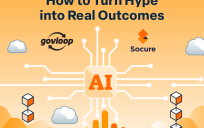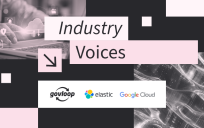Tracking media coverage on the impact of cloud services coupled with AI one may ponder the impact on their enterprise architect (EA) role. The impact varies depending on several factors. For the sake of discussion we will focus on one aspect — time in the field itself. Consider three career stages:
- Early
- Mid
- Late

For clarification, the “Late career” category listed above is an attempt to group various roles that include EA responsibilities, potentially up to a CTO role. Thinking “off-the cuff” about how AI can affect designing cloud environments , here’s how I would rank its impact on the three career levels:
- Mid-Career — highest
- Early Career — moderate
- Late Career — least
Of course, that’s subject to interpretation, but let me explain my rationale. The reasoning behind rating the those late in their careers as least impacted is that they are likely to be in positions where they are thinking and contributing at a more strategic level, rather than designing and/or implementing a single application environment. Considering potential impacts from cloud or AI, the latter could provide information for an EA to consider, such as modifying or validating a strategic plan. Of course, AI may be able to provide a draft for a strategic plan as well. Consider though that the late-career individual has enough experience to understand the feasibility, budget impacts, organizational limitations, etc., which current AI is not expected to understand. In short, AI may help, but the person in this category is likely the least impacted.
Those early in their careers are moderately impacted, in that this group is likely more accustomed to cloud services and have potentially utilized AI in many aspects of their education and early career efforts. They are less likely to be thinking at an organizational strategic level as they implement efficient and resilient designs. Using AI to help engineer better cloud environments could still be challenging, yet their approach mindset should allow them to utilize both cloud and AI more easily.
This leaves us with the mid-career group, who may be impacted the most by both technical paradigms. Yes, while cloud services should not be that challenging, cloud vendors continue to enhance/expand those services. Simultaneously, AI continues to gain more credibility as LLMs are refined. Differentiating services among cloud vendors alone could be challenging as the major cloud vendors compete with somewhat similar services. Staying current in cloud offerings will take some effort and time that a mid-career individual may not have available. Then there is AI, which currently requires some expertise to formulate prompts to help with the task at hand. Learning to prompt effecively takes time and effort, which may be scarce for those at this career point.
Bear in mind, the need to adapt to AI will affect many roles in an organization. Regardless of your category, set aside time to enhance your skill set with these technologies. You and your organization will both benefit.
Dan Kempton is the Sr. IT Advisor at North Carolina Department of Information Technology. An accomplished IT executive with over 35 years of experience, Dan has worked nearly equally in the private sector, including startups and mid-to-large scale companies, and the public sector. His Bachelor’s and Master’s degrees in Computer Science fuel his curiosity about adopting and incorporating technology to reach business goals. His experience spans various technical areas including system architecture and applications. He has served on multiple technology advisory boards, ANSI committees, and he is currently an Adjunct Professor at the Industrial & Systems Engineering school at NC State University. He reports directly to the CIO for North Carolina, providing technical insight and guidance on how emerging technologies could address the state’s challenges.





Leave a Reply
You must be logged in to post a comment.